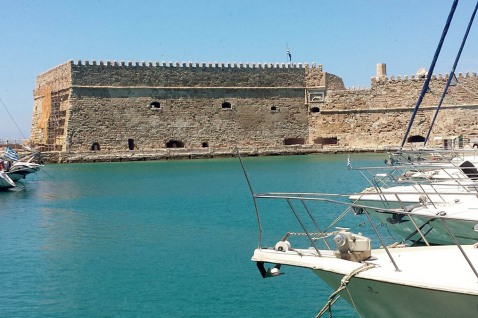
Unveiling History: Exploring the Heraklion Fortress in Crete
This majestic fortress, also known as Koules, has withstood the test of time, preserving stories of conquest, resilience, and the vibrant past of this captivating city. As you step within its sturdy walls, prepare to be transported back in time, enveloped by a sense of awe and wonder.
The Heraklion Fortress was constructed by the Venetians in the early 13th century, strategically positioned to safeguard the city against invaders. Its formidable architecture showcases the Venetian influence with its sturdy walls, robust bastions, and an impressive tower that offers panoramic views of the surrounding landscape. Climb to the top of the fortress for a breathtaking vista, where you can marvel at the shimmering sea, the charming old harbor, and the picturesque cityscape of Heraklion.
Inside the fortress, you'll find a treasure trove of history waiting to be discovered. Explore the various chambers and corridors, imagining the lives of soldiers who once guarded this stronghold. As you wander through the labyrinthine passageways, you can almost feel the echoes of centuries past. The fortress also houses a small museum that provides further insights into its history, featuring artifacts and exhibits that bring the story of Heraklion's maritime past to life.
A visit to the Heraklion Fortress is a journey into the heart of Crete's captivating history. It is a chance to immerse yourself in the architectural grandeur of a bygone era, to appreciate the strategic importance of this fortification, and to gain a deeper understanding of the city's rich heritage. So, step into the realm of the Heraklion Fortress and allow its storied walls to whisper their tales of the past, leaving you with a profound appreciation for the remarkable history that shaped the island of Crete.